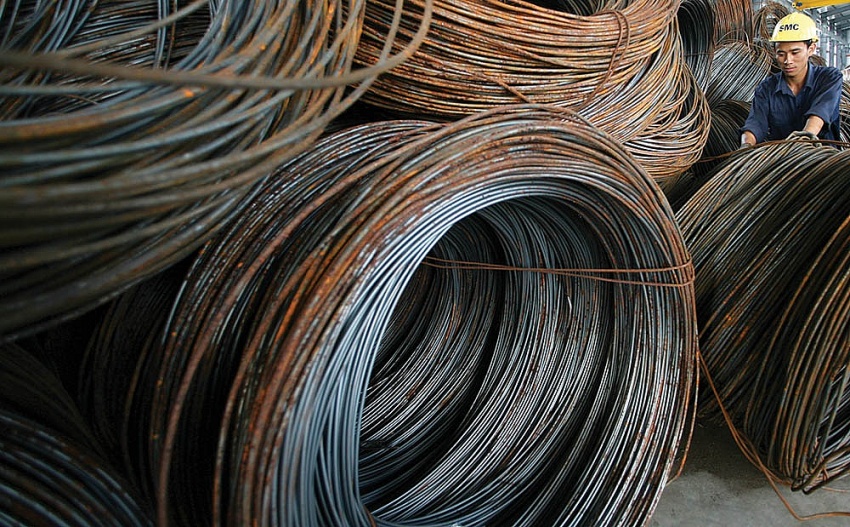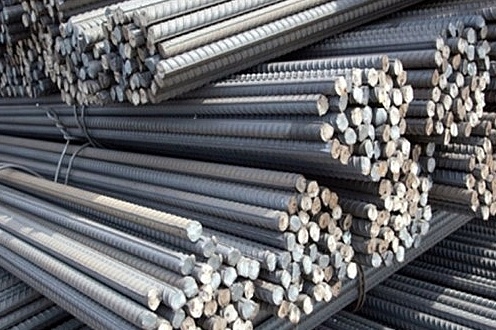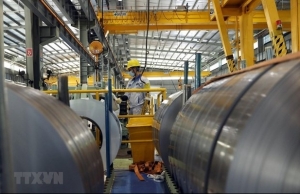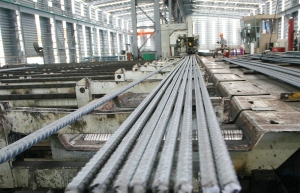Vietnamese steel industry calling for wider investment from overseas entities
 |
| Vietnamese steel industry calling for wider investment from overseas entities, photo Le Toan |
Posco Yamato Vina Steel JSC, a joint venture between South Korea’s Pohang Iron and Steel Company and Japan’s Yamato Holdings, is contemplating constructing a second facility in Vietnam. Lee Youngwoo, general manager of Posco Yamato Vina, wants to “establish a robust sales network” across Vietnam while enhancing scrap supply security.
In 2020, Posco Yamato Vina was the first to manufacture wide H-shaped steel in Vietnam. According to Lee, the business built a representative office in Haiphong last year in order to “create additional prospects for collaboration” with clients.
In the southern province of Ba Ria-Vung Tau, Posco Yamato Vina operates a steel mill with a capacity of one million metric tonnes per year and produces section steel with a capacity of 500,000 tonnes per year.
Following a lack of foreign investment in steel manufacturing in recent years, many observers see Posco Yamato Vina’s concentration on producing such products as a sign of growth that may potentially attract foreign investment into the sector.
Vietnam became the top steel producer in Southeast Asia in 2016, when the nation’s output exceeded more than 17 million metric tonnes of steel and the domestic demand reached 22.6 million metric tonnes, thanks to the strong growth of foreign capital into steel. However, this is also the reason why the steel industry has surplus capacity. The situation has raised worries that the profitability of certain projects may not be sufficient to service debt.
Currently, Formosa Ha Tinh Steel Corporation (FHS), a part of Taiwan’s Formosa Plastics Group, is in the initial phase of a 15 per cent output decrease to stabilise pricing. This action is a result of the steel surplus and the lower-than-anticipated export volume, according to a company spokesman.
Even though FHS continued to produce 5.8 million metric tonnes and generate over $4 billion in sales last year, the company’s earnings issue is becoming more difficult to resolve. According to the Ministry of Finance, FHS is one of the biggest foreign-invested enterprises involved in manufacturing iron, steel, and other metals, but also suffers from declining business outcomes and a minimal government budget contribution, at only $2.19 million, that was not equivalent with land and tax incentives.
Over the past decade, excessive capacity has slowed the growth of the sector. Vietnam’s steel output reached 29.34 billion metric tonnes in 2022, greatly exceeding the amounts projected in the country’s steel strategy that included a vision to 2025.
Officials in Vietnam have called for an increase in exports to assist the sector. Now, however, they must construct a more sustainable model by luring investment into local industries that are underdeveloped or undeveloped. According to the Ministry of Industry and Trade (MoIT), Vietnam’s steel output grew significantly between 2016 and 2021, but was uneven upstream and downstream.
Truong Thanh Hoai, director of the Vietnam Industry Agency, discovered that the manufacturing capacity of local companies has satisfied the demand for conventional construction steel, such as galvanised sheet, steel pipe, and cold-rolled steel coil. “Therefore, it is still necessary to import a large quantity of steel for processing, manufacturing, and related industries,” Hoai said.
This would include alloy steel and particularly hot-rolled coil (HRC), an essential input material for several products such as galvanised steel, steel pipes, shipbuilding, and mechanical engineering, for which domestic production capacity has not yet met demand.
Free trade agreements have aided the steel sector in expanding its market and attracting foreign direct investment as the new environment calls for new development approaches, Hoai added. He recommended investors explore funding in sophisticated integrated iron and steel manufacturing in coastal locations with deepwater ports in order to assure the local supply of HRC steel.
According to the MoIT, the production of HRC in 2022 was around eight million metric tonnes per year, which only partly met the demand of the mechanical sector.
In the middle of last year, the ministry issued a strategy to develop Vietnam’s steel industry to 2030, with a vision to 2050, which is one of the attempts to industrialise Vietnam’s steel industry. The MoIT desires to implement this approach, urging the government to propose a “special policy” to lead the growth of the steel sector and rectify the imbalance between upstream and downstream industries.
Several industry leaders have spoken out against this new development strategy, as well as the overstock and high cost of raw materials, which can make it unprofitable for steel firms in Vietnam. Nguyen Van Sua, former vice president of the Vietnam Steel Association, said only luring foreign investment into the domains of local businesses that are incapable of investing will be suitable, and Vietnam is currently deficient in this area.
“The steel sector will only revive after it solves the dilemma of excess capacity and high input material costs,” he added, while requesting that governments do not encourage investment in all segments.
| In 2022, the output of steel products reached 29.34 million metric tonnes, down 11.9 per cent on-year, while only 27.3 million metric tonnes were consumed, down 7.2 per cent on-year, and exports reached 6.28 million metric tonnes, down 19 per cent against 2021. The exports of steel products may decline by more than 10 per cent in 2023, compared to the same period in the previous year. According to SSI Research, the steel industry’s profits will continue to drop in the first half of the year, but will progressively recover by the end of the year due to the robustness of demand on both local and international markets. |
 | Vietnam upholds antidumping tariff on Chinese steel imports Chinese cold-rolled steel products are subjected to anti-dumping tax rates ranging between 4.42 and 25.22 per cent, depending on the exporter. |
 | Local steel manufacturers backing product quality Local groups using stainless steel have stated that complaints related to substandard products are far off the mark. |
 | Flexibility encouraged as enterprises steel for strain A series of listed steel companies reported losses in 2022, and the outlook for 2023 is expected to also remain negative. |
What the stars mean:
★ Poor ★ ★ Promising ★★★ Good ★★★★ Very good ★★★★★ Exceptional
Related Contents
Latest News
More News
- Global partnerships key to Vietnam’s IFC development (December 26, 2025 | 16:18)
- Vingroup pulls out of bid to invest in North-South high-speed railway (December 26, 2025 | 11:42)
- Strengthening supply chains through trade promotions and customs reform (December 24, 2025 | 14:00)
- PM orders investment model for North–South high-speed rail (December 22, 2025 | 17:43)
- LS Eco Energy to invest in Vietnam rare earth sector (December 22, 2025 | 17:31)
- Government moves to establish International Financial Centre (December 21, 2025 | 21:00)
- Vietnam's IFC to target global investment flows (December 21, 2025 | 18:00)
- Two national hospitals expand capacity with new facilities (December 20, 2025 | 09:00)
- Ha Tinh breaks ground on major Vingroup industrial and energy projects (December 19, 2025 | 18:24)
- EVN launches major power infrastructure projects nationwide (December 19, 2025 | 18:17)

 Tag:
Tag:





















 Mobile Version
Mobile Version